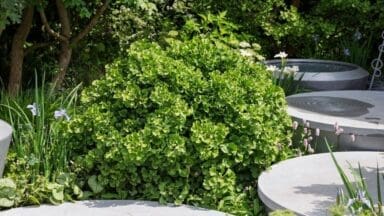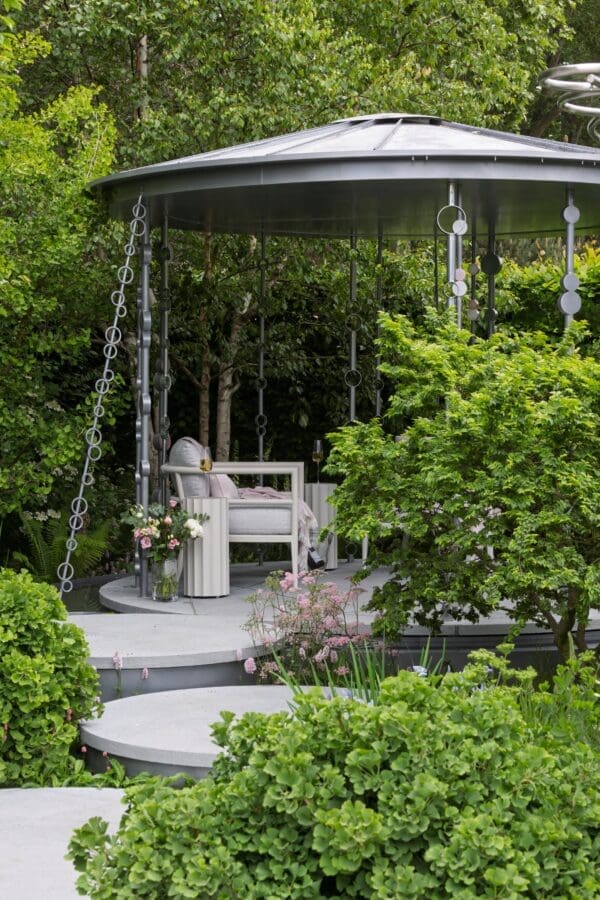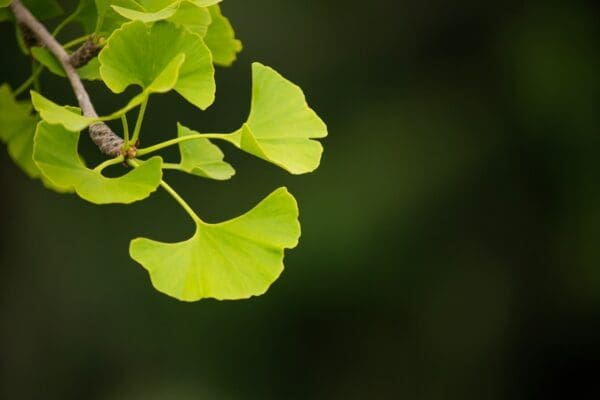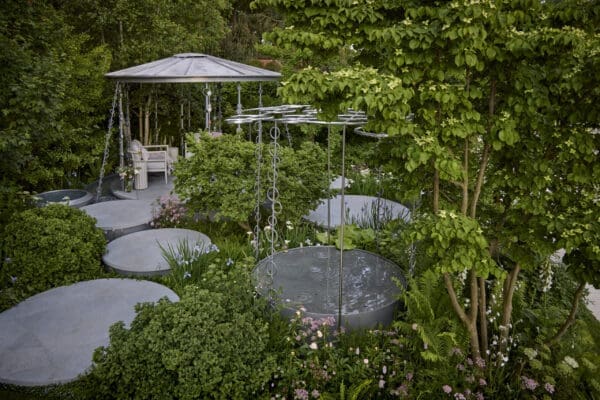
A unique gymnosperm with ancient fossil records, Ginkgo, originally native to China, dates back at least 200 million years and is celebrated for its resilience and beauty. Gingko are known for their distinctive, fan-shaped, bright green leaves, which turn a bright gold in autumn. In landscaping, the trees are highly valued for their resilience and striking appearance as they are easy to plant and maintain.
Just as a ‘conventional’ element of topiary, the cunning use of the unique cultivar, Ginkgo biloba ‘Globosa’, by designer Catherine Macdonald in the Boodles Raindance Garden at this year’s RHS Chelsea Flowers Show, added striking visual interest, structure and formality to the garden. With their graceful multi-stemmed structure and strong architectural form, the two-cloud shaped domes, planted either side of the path resembled beautiful, living sculptures – attracting much interest amongst the show visitors.
Normally seen as huge trees, the compact cultivar, naturally forms into cloud-shaped domes, lending itself to an informal topiary category. Versatile, this naturally compact cultivar reaches heights between 1 and 2 meters, allowing for use in both small gardens or larger landscapes – providing the perfect focal point for structured planting schemes.



Resilience and beauty with minimal pruning
Sourced from Creepers Nursery for the Boodles Raindance Garden, the nursery explains that ‘Globosa’ typically can survive temperatures down to -20C, making it a resilient and hardy variety. This cultivar can endure a variety of soil types, including sandy, loamy, and clay soils, but prefers well-drained soil and can tolerate both acidic and alkaline conditions. Full sun is advised for optimal growth, enhancing its distinctive fan-shaped foliage, which turns golden-yellow in autumn.
Pruning is minimal with ‘Globosa’, explained Creepers due to its inherent symmetrical form. Due to their slow growth, they hold their structure well, needing only light trimming to retain the spherical shape. Light pruning in late winter or early spring will help maintain its shape and remove any dead or crossing branches, encouraging a healthy, dense canopy.
Ginkgo biloba ‘Globosa’ is both pest and disease resistant, making it a low-maintenance choice for gardeners and landscape designers. Its ability to withstand urban pollution and varying soil conditions will make it a popular choice in both urban and suburban settings – worldwide.

